- Home
- Alice Hoffman
Magic Lessons
Magic Lessons Read online
Thank you for downloading this Simon & Schuster ebook.
Get a FREE ebook when you join our mailing list. Plus, get updates on new releases, deals, recommended reads, and more from Simon & Schuster. Click below to sign up and see terms and conditions.
CLICK HERE TO SIGN UP
Already a subscriber? Provide your email again so we can register this ebook and send you more of what you like to read. You will continue to receive exclusive offers in your inbox.
Love all, trust a few, do wrong to none.
—WILLIAM SHAKESPEARE
PART ONE
Transformations
1664
I.
She was found on a January day in a field where the junipers grew, wound in a blue blanket with her name carefully stitched along the border with silk thread. There was a foot of snow on the ground, but the sun was strong and whoever had named the child Maria had most assuredly loved her, for the wool of the blanket was of a very fine grade, certain to keep her warm, and she’d been well cared for, not lacking for comfort or food. She was a quiet baby, but as the day passed she began to fuss and then to cry, doing so unfailingly and with great effort, until at last a crow came to perch on her basket, peering at her with its quick black eyes.
That was how the old woman discovered the abandoned child, staring at a bird nearly as large as herself, fearless and wide-eyed from the start. Maria was a beautiful baby, with pitch-black hair and pale gray eyes, a silvery shade so unusual the old woman wondered if she wasn’t a changeling, for this was a place where strange things happened and fate could be a friend or a foe. Changeling or not, Hannah Owens carried the baby back into the woods, singing as they went, the first human words the baby would remember.
The water is wide, I cannot get oe’r it
And neither have I wings to fly
Give me a boat that will carry two
And I shall row, my Love and I.
O down in the meadows the other day
Agathering flowers, both fine and gay
Agathering flowers, both red and blue
I little thought of what love could do.
In the child’s first days at Hannah’s cottage, the insistent bird beat his wings against the cloudy, pitted glass window, doing his best to be let in. He could not be chased off with pails of vinegar and water nor with shouts and threats. One could hardly toss stones at such a loyal creature. The crow had been allowed to stay and was called Cadin, a name derived from Maria’s baby talk name of Cawcaw. Whenever the weather turned foul, he settled onto the wooden perch kept beside the sooty fire. There he cleaned his gleaming feathers and kept a sharp eye on Maria.
“I suppose he’s yours,” Hannah had said to the baby in her basket when seven days had passed and the crow had not left his post on the fence surrounding the garden, not even to eat or drink. “Or perhaps you’re his.”
Hannah knew full well that you do not choose a familiar, it chooses you, bonding with you in a way no other creature can. Hannah, herself, had long ago made a pet of a she-cat that had followed her everywhere, a pretty marmalade-colored tabby with lovely markings, a beloved familiar that was in tune with her thoughts and desires. On the day Hannah was let out of prison, she found the cat nailed to the door of her house in the village. That’s what her neighbors had done while she’d been imprisoned, as well as robbing her of the few belongings she’d had, a feather mattress, some pots and pans, a quill pen. Hannah carried the cat with her into the woods, and buried it in the green hollow where she had camped before her cottage was built, a glade she called Devotion Field where bluebells grew in the spring and celandine shone through the last of the winter frost in a carpet of white and yellow stars. The beauty of that meadow reminded Hannah of the reasons to live in the world, and the reasons to mistrust those who saw wickedness in others, but never in themselves. The natural world was at the heart of her craft; what grew in the woods could harm or heal, and it was her obligation to know the difference. It was part of old Norse tradition, Seidhr, that had been brought to England in the ancient times. This was green magic, visionary in nature, blending the soul of the individual with the soul of the earth.
Tree Magic
Holly should be burned to announce the end of winter.
Rowan, sacred to witches for protection for making spindles and spinning wheels.
Hazel will lead to water.
Willow is sacred magic, transporting the soul.
Yew signifies life, death, and rebirth, used for bows. Beware: the seeds are poisonous.
Ash is sacred and healing, the leaves make a tonic for horses.
Apple is the key to magic and is used for medicine, love spells.
Birch, write spells on strips of bark and they will reach their intended.
Pine tree sap is a salve for pox and spotted fever.
The leaves of the larch tree boiled as an ointment for wounds and cuts.
Hemlock will cure swellings and sores.
It was indeed good fortune that the child had been found by Hannah and not by another, for there were many in Essex County who would have disposed of an unwanted baby as easily as they’d have drowned a cat. Hannah was a kind and generous soul, and she didn’t think twice before giving the baby a home and, as it turned out, a great deal more. She stitched a blue dress for the child, for good fortune and protection, and tied a strand of blue wool around her ankle.
Residents of nearby villages and towns believed that among the good and decent folk there were hidden servants of evil who caused children to die of pox and fevers and could curse the land so that it lay fallow. What people believed often came to be, and blame was placed where it was imagined. This was the year when two comets streaked across the sky for mysterious causes and a volcano that had begun to erupt at Mount Etna in Italy would soon spread ash as far as their own village, so that it seemed to snow in March. Within a year, two poor souls in London were infected with the plague, with more and more falling ill each day. People wore masks and locked themselves in their houses, yet the illness still found them, sliding under doors, it was believed, or flowing through windows, but in truth the disease had been brought from house to house by doctors who didn’t know well enough to wash their hands. By 1665 the city would lose sixty-eight thousand inhabitants.
When Maria turned two, the great fire of London destroyed seventy thousand homes in a city of eighty thousand, and smoke filled the air for the entire month of September. Birds fell from the sky and children coughed up black phlegm, a sign they would not see their next birthday. The world was a dangerous place where people were punished for their sins and most believed that good fortune depended upon a measure of faith and superstition. These were years when cruel and unexplained things happened, and kindness was a rare and valued gift, one that Hannah Owens happened to possess.
* * *
There were those in the county known to practice the Nameless Art, spells and rituals handed down through the generations by cunning folk who knew more than most. These women understood the mysterious nature of medicine and love and did their best to pierce the veil that separated men and women from knowledge that might save them from ill fortune and disaster. They could mend a broken heart as easily as they could cure a fever, but they did so discreetly, for women were blamed for much of the world’s troubles, and there were known to be witches in this county.
More than twenty years earlier, Matthew Hopkins, a young man from the village of Manningtree on the banks of the River Stour in Essex County, had begun his wicked hunt for witches. Aided by the Earls of Warwick and Manchester, he became the witch-finder general, and was paid a lordly amount for sending women to their deaths. What made for a witch was in his hands, as if he alone could see through the spectral curtain and pluck o
ut the evidence of evil. A mark on a woman’s hand or cheek, a bird at her window, a dog or cat or some other creature that would not leave her side, a book of magic found in a cupboard or discovered beneath a straw mattress, an embittered neighbor with a grudge and a story to tell. Such was the manner of proof, especially when it came to poor women without a family or a champion.
In the time of the witch-finder, it was believed a witch could be ensnared by nailing her steps to the ground so that she could not flee, and iron traps made to catch fox were set out, for it was well known that a witch’s powers decreased when she was near metal. Some witch-hunters actually nailed women’s feet to the ground and left them to try to escape. If they were able to evade their captors, they then needed to dab rosemary oil on the spot where the nail had entered them while invoking a spell of protection and vengeance: This cannot harm you on this day. When you walk, you walk away. When you return, all your enemies will burn.
Still, protection was hard to find. Three hundred suspects were charged; one hundred of these poor souls went to the gallows, having been tested by being tied to a chair and tossed into a river or pond to see if they would drown or if they would float like a witch. It was a test that was impossible to win. Hannah Owens had been fortunate to have escaped a hanging, for the trials were stopped and the madness was broken, much like a fever, suddenly and for no apparent reason, other than the fact that logic finally prevailed. The accused were let out of prison, grateful even though there were no apologies or explanations, and certainly no reparations. Hopkins died in his twenties of the coughing disease, said to have been contracted after he had been swimming. There were many who were overjoyed to hear that he’d been damned with his own version of drowning, his lungs filling with water that had sunk him as surely as if he’d been tied to a stool and forcibly immersed in a pond. On the day he was buried, scores of women in Essex County celebrated with bonfires burning and mugs of ale poured and enjoyed. As for Hannah, she’d had a cup of tea on that day, made of a mixture she had blended to give herself courage during these dreadful times when a woman couldn’t walk down the street without fear of being accused of misdoings, especially if a book was found in her belongings, or if she could read and write her own name.
Although the mania had died down, mothers continued to tie their babies to their cradles to make certain they wouldn’t be stolen in the night, setting bowls of precious salt on their windowsills to protect those inside. Men nailed upside-down horseshoes above barn doors to ensure that their luck wouldn’t run out, for they privately feared that a witch could ruin any strong man’s health by placing a strand of his hair or his fingernail clippings under the eaves of a house. Children were taught never to speak to strangers; should they stray and be bewitched, they must shout out numbers backwards as a way to break the enchantment. Those unfortunate children who did go missing were searched for with pitchers of goat’s milk, said to be a witch’s favorite drink, and many times children who had been spirited away appeared at the door late at night, with burrs in their hair and no practical excuse to give their mothers, other than a thin apology and a claim they’d become lost in the woods and could not for the life of them find their way home.
* * *
Hannah Owens lived apart from the delusions and bad intentions of men, as deep in the forest as possible, in a small cottage hidden by vines. She’d had it built by a local carpenter, a fellow no one would hire due to a deformity at birth, a simple, honest man who later claimed the old woman had blessed him and given him a salve she had concocted from her apothecary garden that had made his withered arm bloom and become whole again. The roof of Hannah’s house was thatched and the chimney was platted with reeds and clay, with a pot of water kept near the hearth in case a spark should catch the reeds on fire. The path to her door was made of uneven blue stones, hidden by shrubs. So much the better, for the difficult going provided protection from prying eyes. And still, women from town and from the neighboring farms managed to find their way when the need arose, setting the brass bell to ringing when they knocked on the door.
Hannah knew the woods as well as anyone. She knew that counting the knots on a lilac bush could predict the number of cold spells and that if you lit a bit of snow with some tinder and it melted quickly the snow on the ground would soon disappear. Nutmeg opened the heart, lily was useful for rashes, and arnica could make a man burn with desire. When a baby refused to be born or would not nurse, when a child was ailing and feverish, when a husband strayed, when a candle burst into flame of its own accord, marking a spirit lurking nearby, women came to Hannah Owens’ door, and for the price of some eggs, or a pitcher of goat’s milk, or, in the most difficult cases, a broach or a ring, a remedy could be found.
* * *
Maria grew up watching such transactions, always after night fell, for no one wished to be seen at the witch’s door. Hanging on the wall was the Lucky Hand, an amulet shaped into five fingers, made from moss, preserved on Midsummer’s Eve with the smoke of a bonfire, which would protect the house from bad luck and ill fortune. The women who came calling sat at the kitchen table where bread was kneaded and hens were butchered and babies were born, often after a difficult labor. By the age of five, Maria had been taught how to turn a baby in its mother’s womb, how to grind a bird’s bones into a powder to combat sleeplessness, how to identify the symptoms of a fever or a pox. She had been given close instructions on which herbs were best to gather, carrying them home in a basket or in the skirt of her long apron. Wood avens to cure toothache, black horehound for nausea and monthly cramps, salted leaves that could be used to dress and heal the bite of a dog, elderberry and cherry bark for coughs, dill seeds to be rid of hiccoughs, hawthorn to disperse bad dreams and calm a frantic heart, and nettle, which made a fine soup, to treat burns, infections, and inflammations. Maria only had to touch a clump of nettle once without gloves to learn her lesson. Even after Hannah had rubbed the crumpled leaves of the jewelweed plant to calm the afflicted skin, Maria avoided those stinging plants forever after. From the start, the girl was a quick learner. She didn’t have to be hurt twice to be wary, and she knew early on that love could be either a blessing or a curse.
* * *
The women who made their way through the woods most often came for one thing. Time and time again, it was love. Love everlasting, young love, love defiled, love that caused aches and pains, love that left bruises and red welts, love wished for desperately, or love to be rid of as quickly as possible. Often Hannah wrote down the desired result and placed the bit of parchment in her spell box. She cast her spells while lighting a candle. White for health, black for expunging sorrow, red for love. Prick the third finger of the left hand with a silver needle to bring back a lover. The power of a spell increased with the waxing moon, and decreased with the waning moon. Time mattered, devotion mattered, belief mattered most of all. Maria sat by the hearth, which was hers to tend, for she had her own tinderbox and could start a fire in a flash. From that warm and cozy spot she watched Hannah scan the pages of her book filled with remedies and spells, careful to take note of the potions and powders that were prescribed: amulets of apple seeds and menstrual blood, doses of henbane that could bind a couple together, or, if used to excess, could cause delirium or death, the heart of a deer or a dove that brought about devotion even in the most feckless and untrustworthy of men, and fragrant verbena, which, depending on its use and what the user desired, could bring a man to you or cause him to be impotent.
“Remember one thing,” Hannah told Maria. “Always love someone who will love you back.”
Practical Materials
Candles.
Essential oil. Lavender for calming. Sage to purify. Rosemary for remembrance. Rose for love.
Salt, garlic, stones, thread, talismans for fortune, love, luck, and good health.
Always meet and depart from inside a circle.
Honor the twelve full moons in a year from December until November: Oak, Wolf, Storm, Hare, Seed, Dryad, Me
ad, Herb, Barley, Harvest, Hunter’s, Snow, and the thirteenth moon, always most special, the Blue Moon.
Silver coins, pure water, willow, birch, rowan, oak, string, knots, mirrors, black glass, brass bowls, pure water, blood, ink, pens, paper.
Nettle will give protection and return evil to sender. Apple for rebirth and immortality. Holly leads to dream magic but can be poisonous, Blackthorn can return evil to the sender. Ferns call rain, but fend off lightning. Feverfew to ward off illness. Wormwood is poisonous, but can be used for divination. Belladonna, though poisonous, can cause visions and give the power of the sight. Mint on your windowsill will keep away flies and bad fortune. Lavender for luck.
Hannah Owens was unusual not only for her kindness and herbal knowledge, but for the stunning fact that she could both write and read, a rare skill, for a working woman in the country was expected to have no more formal learning than a plow horse and ninety percent were illiterate. Hannah had been an orphan herself, but she had been raised in the scullery of a royal house to do kitchen work, and there the tutor for the family’s sons had taken it upon himself to allow her into the library and teach her to read. As soon as Maria was old enough, Hannah taught her precious talents to the child on stormy nights when the weather was too awful for even the most lovesick women to come to the door. They sat in the light of a lantern and drank cups of Courage Tea, a blend of currants, spices, and thyme, made for protection and healing, a mixture that needed to steep for a long time. It was an elixir that made it clear one should never hide who one was. That was the first step toward courage. In this way, magic began. The crooked black letters looked like nothing more than circles and sticks, and then all at once, after weeks of attention, they became words that took on the shape of cows and clouds and rivers and seas, a miracle on the page, drawn with ink made of oak seeds, or plant sap, or animal blood, or the damp ash of charred bones. There were sympathetic inks that few knew of; a scribe could write with one and it would not be seen until a second ink was used, or when lime juice, milk, or vinegar were brushed onto the paper, and then, after heat was applied, the message would suddenly be visible.

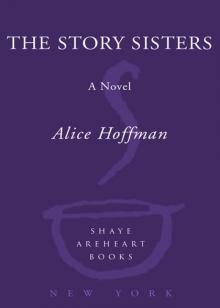 The Story Sisters
The Story Sisters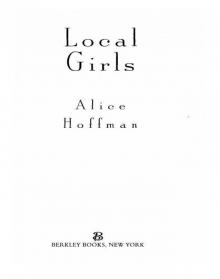 Local Girls
Local Girls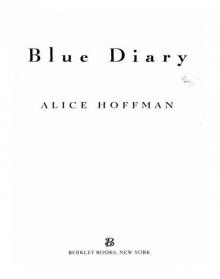 Blue Diary
Blue Diary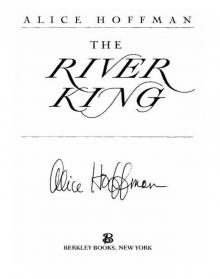 The River King
The River King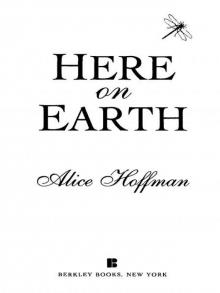 Here on Earth
Here on Earth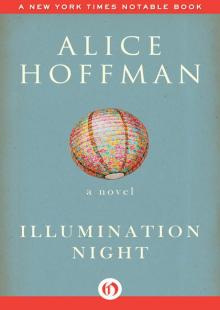 Illumination Night: A Novel
Illumination Night: A Novel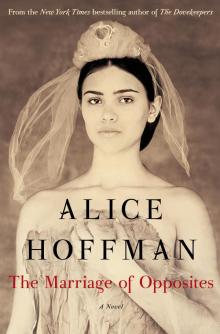 The Marriage of Opposites
The Marriage of Opposites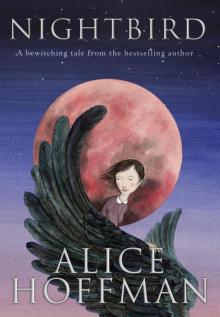 Nightbird
Nightbird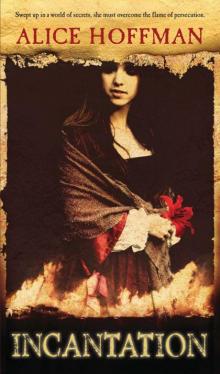 Incantation
Incantation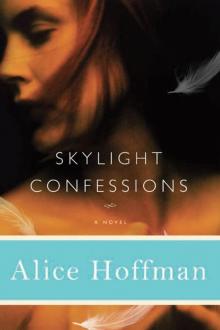 Skylight Confessions
Skylight Confessions The Ice Queen
The Ice Queen Second Nature
Second Nature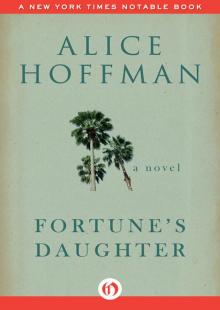 Fortune's Daughter: A Novel
Fortune's Daughter: A Novel Seventh Heaven
Seventh Heaven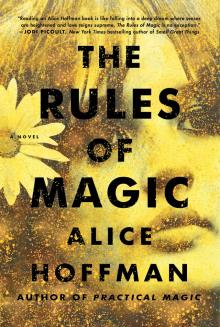 The Rules of Magic
The Rules of Magic The Red Garden
The Red Garden The Third Angel
The Third Angel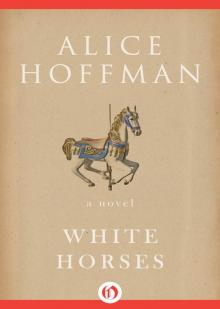 White Horses
White Horses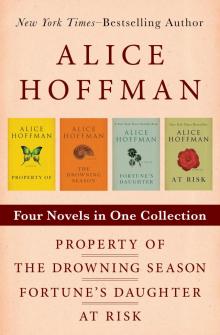 Property of / the Drowning Season / Fortune's Daughter / at Risk
Property of / the Drowning Season / Fortune's Daughter / at Risk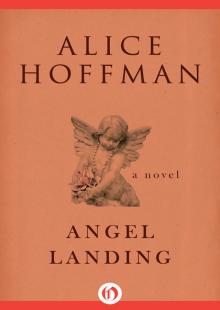 Angel Landing
Angel Landing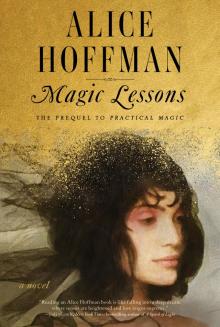 Magic Lessons
Magic Lessons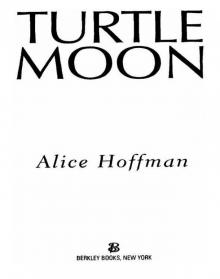 Turtle Moon
Turtle Moon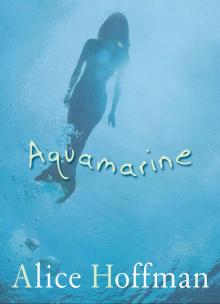 Aquamarine
Aquamarine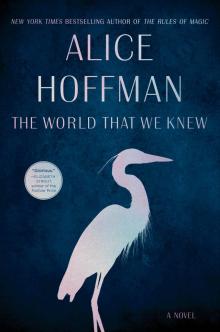 The World That We Knew
The World That We Knew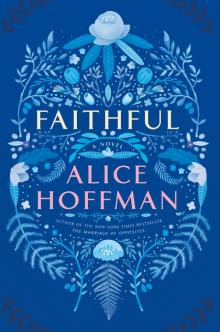 Faithful
Faithful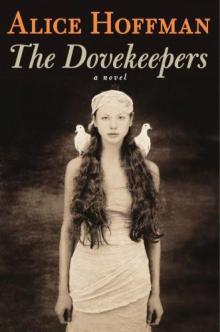 The Dovekeepers
The Dovekeepers The Foretelling
The Foretelling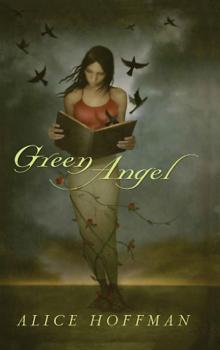 Green Angel
Green Angel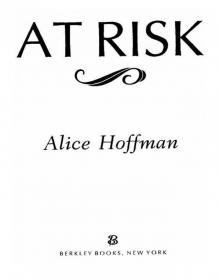 At Risk
At Risk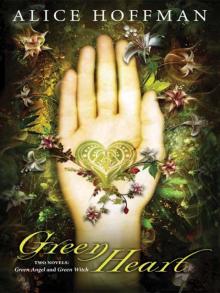 Green Heart
Green Heart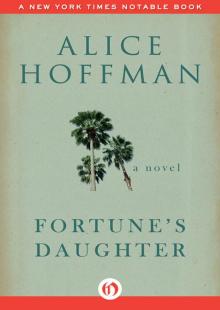 Fortune's Daughter
Fortune's Daughter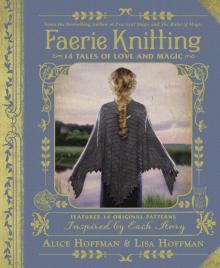 Faerie Knitting
Faerie Knitting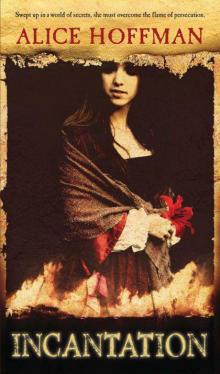 Incantation (v5)
Incantation (v5)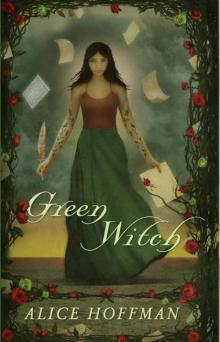 Green Witch
Green Witch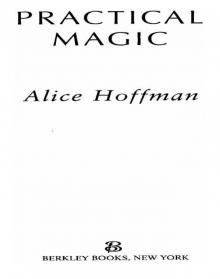 Practical Magic
Practical Magic The Museum of Extraordinary Things
The Museum of Extraordinary Things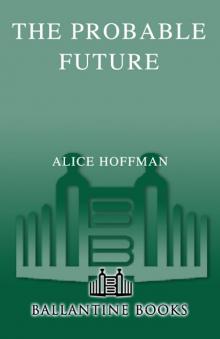 The Probable Future
The Probable Future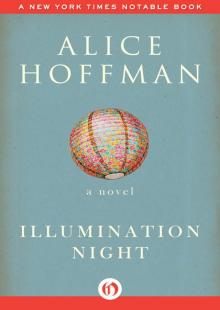 Illumination Night
Illumination Night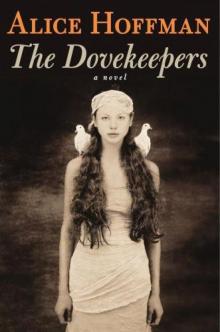 The Dovekeepers: A Novel
The Dovekeepers: A Novel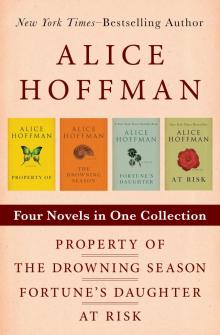 Property Of, the Drowning Season, Fortune's Daughter, and At Risk
Property Of, the Drowning Season, Fortune's Daughter, and At Risk